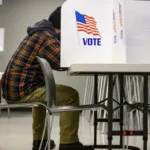By Janice Hisle
The U.S. Department of Transportation (DOT) says it will probe what caused Southwest Airlines’ “unacceptable rate of cancellations and delays” that left travelers stranded at airports across the country amid an intense winter storm.
In a Tweet posted just after 9 p.m. on Dec. 26, the DOT stated that Southwest’s flight disruptions and “reports of lack of prompt customer service” were cause for concern.
“The Department will examine whether cancellations were controllable and if Southwest is complying with its customer service plan,” reads the tweet, which was viewed by 4.4 million people in less than 12 hours.
That plan spells out how the airline is supposed to handle issues such as cancellations and refunds.
About three hours after the DOT’s announcement, Transportation Secretary Pete Buttigieg posted the department’s statement and wrote on Twitter: “I’m tracking closely & will have more to say about this tomorrow.”
The investigation could lead to fines or other punitive action against Southwest if the airline is found to be noncompliant with regulations. Airline officials didn’t respond by press time to a request by The Epoch Times for comment.
Airline ‘Fully Staffed’
Southwest says it’s the largest carrier in 23 of the top 25 travel markets in the United States.
“We were fully staffed and prepared for the approaching holiday weekend when the severe weather swept across the continent,” Southwest said in a statement that preceded the DOT’s announcement.
“These operational conditions forced daily changes to our flight schedule,” the airline said.
The demands overwhelmed “the tools our teams use to recover the airline.”
Jay Ratliff, an aviation expert for more than three decades, says it’s disingenuous for the airline to blame the weather.
“Southwest Airlines has just had an operational meltdown,” he told The Epoch Times. “There’s really no other way to say it. Other airlines had seen the storm coming, and the storm came and passed.”
Although the snow and bitterly cold temperatures affected all U.S. airline travel to some extent, Southwest was responsible for the lion’s share of problems across the nation, Ratliff said.
For example, on Dec. 26, American Airlines, which runs more flights than Southwest, canceled 12 departures, fewer than 1 percent of its total; in contrast, Southwest canceled 2,909 flights—71 percent of its total—affecting an estimated 360,000 Southwest passengers in a single day, according to Ratliff.
That same day, about 4,000 total flights were canceled across the United States, meaning that other airlines were responsible for roughly 1,000 cancellations in total.
Lack of Automation
Citing statements made by Southwest executives, Ratliff said the airline was stuck manually scheduling employees and aircraft—a process that should be fully automated.
“When you have so many flights canceled in so many different locations, and you have to get aircraft and crew to certain spots at certain times, the idea of processing that manually is not next-to-impossible,” he said. “It’s impossible.”
He said the airline “really dropped the ball” in terms of automation.
“They should have invested money years before; they’ve not done it,” Ratliff said. “And, unfortunately, as a result, you have passengers now that trusted Southwest Airlines for their holiday travel—and they chose wrong.”
The effect is huge, he indicated. Southwest runs about 3,000 or 4,000 flights per day, and if they carry about 150 passengers per flight, that’s 450,000 to 600,000 people per day.
“Multiply that by a week—and, well, now you’re talking about 3.5 million people to 4 million people,” Ratliff said. “There’s your millions of people that are being inconvenienced right and left.”
Stranded for New Year’s?
Southwest said in its posted statement that it will take a while to return to normal.
“As we continue the work to recover our operation, we have made the decision to continue operating a reduced schedule by flying roughly one-third of our schedule for the next several days,” the airline stated.
As of Dec. 27, passengers and crews were still stranded across the country, with little to no indication of when they might reach their destinations, according to Ratliff. Weary travelers, pilots, and flight attendants are sleeping in airports; photos posted on social media show stray luggage accumulated in various airports.
On top of that, if passengers try to book flights on competing carriers, they’re facing rates that seem to be exorbitant to them, ranging from $1,000–$3,000 for domestic flights, according to screenshots posted on Twitter.
The ripple effects will continue to linger for several days, Ratliff said.
Behind the scenes, Federal Aviation Administration regulations add layers of complexity that are unknown to most people. For example, each flight crew has a limit on the number of flight hours allowed per day.
“So you have to match everything up so that you don’t have a crew that is almost out of time taking over a flight,” Ratliff said. “So all of this stuff requires time to match everything up correctly.
“It’s like putting together a big puzzle and being told that you have minutes to do it instead of hours. It’s impossible. And that’s what the Southwest employees are finding right now.
“It’s something that is probably one of the worst examples of customer service we’ve ever seen from Southwest Airlines. And it couldn’t have happened at a worse time, with the holiday travel season upon us.”
He predicts that Southwest will need until Jan. 2 or later to recover.
“But of course, by that point in time, the high demand for travel for the holidays is going to be over,” Ratliff said.
He hopes that Southwest can find a way to remedy its deficiencies and avoid such issues in the future.
“Southwest is a great airline,” Ratliff said. “They’re just not acting like it.”
Workers Want Remedies
Meanwhile, the airline is facing demands from employees’ unions to address issues that contributed to the current crisis.
Transport Workers Union of America Local 556 (TWU) represents the airline’s 18,000 flight attendants. In an email to The Epoch Times, Lyn Montgomery, union president, commended the airline’s “courageous and caring” flight attendants.
Those employees and gate agents have the most contact with customers and therefore have borne the brunt of customers’ concerns and complaints.
Montgomery, however, thanked the public for its “outpouring of support” and said, “Our advice for anyone still attempting to reach their destination is to pack your patience.”
Montgomery said TWU is calling upon Southwest Airlines’ leadership to fix the problems that caused the meltdown. “Make the changes for the long term that have caused so much strife in this holiday season,” she wrote. “We demand that Southwest Airlines ‘Make it Right!’”
Those last three words make up a phrase that the union has often used in contract negotiations; TWU has been working under a contract that expired several years ago.
Likewise, the union representing the airline’s 10,000 pilots, Southwest Airlines Pilots Association (SWAPA), reports working for more than 800 days under an expired contract.
The Epoch Times obtained a statement that the SWAPA President, Capt. Casey Murray, emailed to union members on Dec. 26. He commended his fellow pilots for their professionalism despite a “leadership vacuum.”
“Pride and avarice have replaced our once-vaunted culture,” he wrote.
Murray said management has continued to pridefully uphold “their outdated processes and technology.”
And he used the word, “avarice” to refer to “how our management chooses to continue to reward shareholders instead of stakeholders—the very same stakeholders that the company relies on to recover the operation during and after every meltdown.”
On Dec. 8, SWAPA posted an update on its website: “Southwest Airlines announced the return of shareholder dividends during their December 7 Investor Day event, instead of focusing on the frontline employees directly responsible for the record revenues. Southwest becomes the first U.S. carrier to restore shareholder dividends, at a time when most of the SWA labor groups continue to work under post-amendable contracts.”
Amid the chaos, Southwest, in a news release, promised to make amends.
“On the other side of this, we’ll work to make things right for those we’ve let down, including our Employees,” the statement said. “With no concern higher than ultimate Safety, the People of Southwest share a goal to take care of each and every Customer. We recognize falling short and sincerely apologize.”






